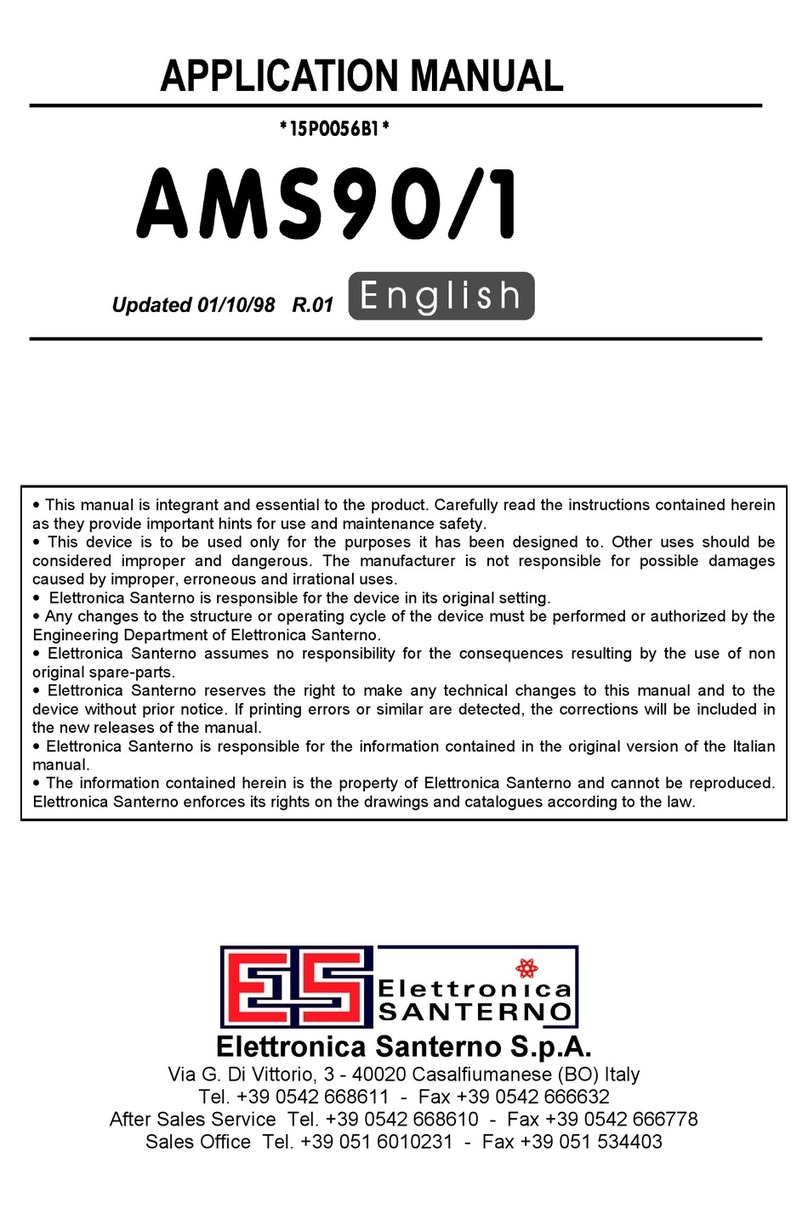2/27
TABLE OF CONTENTS
1. BASICS.....................................................................................................................4
1.1. GENERAL................................................................................................................4
1.2. SCOPE AND APPLICATION....................................................................................8
2. ES927 CONTROL BOARD.....................................................................................12
3. DEFINITION OF THE SYSTEM..............................................................................14
3.1. SYSTEM STRUCTURE..........................................................................................14
3.2. FUNCTIONAL DESCRIPTION...............................................................................14
4. DIAGNOSTICS.......................................................................................................16
5. VALIDATING THE OPERATION OF A SAFETY FUNCTION.................................20
5.1. ACCEPTANCE TEST REPORTS...........................................................................20
5.2. AUTHORIZED PERSON........................................................................................20
5.3. PERFORMING THE ACCEPTANCE TEST............................................................20
6. COMMISSIONING, MAINTENANCE AND DECOMMISSIONING, DISPOSAL, FAULT
TRACING AND DIAGNOSTICS.............................................................................. 22
6.1. COMMISSIONING .................................................................................................22
6.2. MAINTENANCE.....................................................................................................22
6.3. DECOMMISSIONING.............................................................................................22
6.4. DISPOSAL.............................................................................................................22
6.5. ALARM MESSAGES GENERATED BY THE DRIVE..............................................23
7. COMPONENTS FOR STO APPLICATIONS ..........................................................24
7.1. ES927 BOARD.......................................................................................................24
7.1.1. ENVIRONMENTAL REQUIREMENTS FOR EQUIPMENT INSTALLATION,
STORAGE AND TRANSPORT ................................................................................... 24
7.2. SAFETY RELAY PROPOSAL FOR STO APPLICATION.......................................25
7.3. PUSH-BUTTON PROPOSAL TO BE USED WITH EMERGENCY STOP FOR STO
APPLICATION........................................................................................................25
7.4. SWITCH PROPOSAL TO BE USED WITH PREVENTION OF UNEXPECTED
START-UP FUNCTION IMPLEMENTED WITH STO FOR STO APPLICATION ....25
7.5. CABLE PROPOSAL FOR STO APPLICATION......................................................25
8. STO TECHNICAL DATA......................................................................................... 26
8.1. STO DATA RELATED TO SAFETY STANDARDS.................................................26
9. TERMS AND ABBREVIATIONS.............................................................................27























